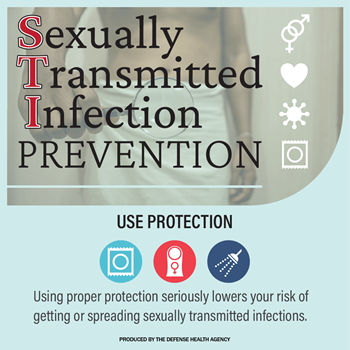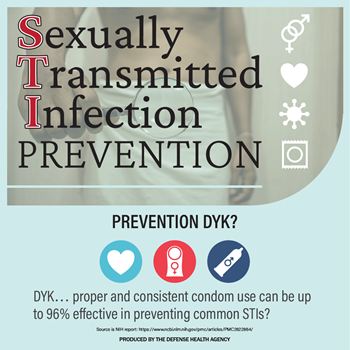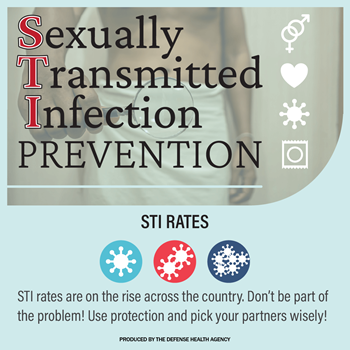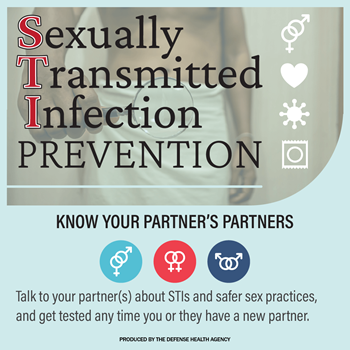Graphics and Social Media Content

Suggested Social Media Message: “STIs pose a serious risk to service members’ health, and their readiness. Using the right prevention methods and regular testing lowers your risk. Learn more with this article from the U.S. Army Public Health Center. https://www.army.mil/article/250563/protect_yourself_in_the_war_against_sexually_transmitted_infections #PreventSTIs #TalkTestTreat #TalkTestTreatReady“

Suggested Social Media Message: “Did you know that condoms are an important and effective way of preventing the spread of STI? Depending on the disease, and with proper use, condoms prevent up to 96% of STI transmission. https://www.cdc.gov/condomeffectiveness #PreventSTIs #TalkTestTreat #TalkTestTreatReady“

Suggested Social Media Message: “Don’t fall into the “it won’t happen to me” trap. It’s shocking but true… 1 in 5 Americans has an STI. Read more at:
https://health.mil/News/Articles/2021/07/06/Sexually-transmitted-infections-you-may-have-one-and-not-know-it #PreventSTIs #TalkTestTreat #TalkTestTreatReady“

Suggested Social Media Message: “Honest communication between sexual partners is essential. Talk to your partner(s) about STIs and safer sex practices, especially if you or they have multiple partners. Regular testing, especially when you have a new partner, lowers your risk of getting or passing on an STI. https://www.cdc.gov/std/treatment #PreventSTIs #TalkTestTreat #TalkTestTreatReady“